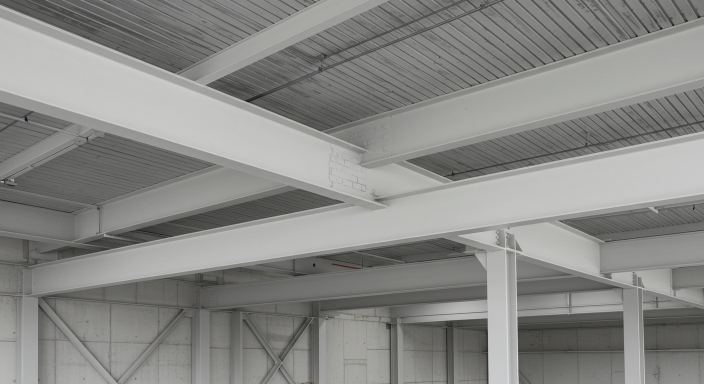Intumescent paint is a fire-resistant coating that expands when exposed to high temperatures, forming an insulating layer that helps protect structural elements. The effectiveness of this paint depends significantly on the surface to which it is applied. Understanding the best surfaces for intumescent paint ensures proper adhesion, durability, and optimal fire resistance.
This guide explores the most suitable surfaces for intumescent paint, preparation techniques, and practical application tips.
Understanding Intumescent Paint and Its Application
Intumescent paint functions by reacting to heat, creating a thick, protective char layer that delays structural damage. It is widely used in commercial, industrial, and residential settings, primarily on structural steel, wood, concrete, and drywall.
Applying intumescent paint correctly requires a suitable surface that allows for strong adhesion and long-term performance. Different materials respond uniquely to this coating, and proper preparation is key to achieving the desired fire resistance.
Suitable Surfaces for Intumescent Paint
1. Structural Steel
Steel is one of the most common materials for intumescent coatings due to its vulnerability to high temperatures. When exposed to fire, steel can lose its load-bearing capacity quickly, making fire protection essential.
Preparation and Application:
- Remove rust, grease, and dirt using abrasive blasting or a degreaser.
- Apply a compatible primer to enhance adhesion and corrosion resistance.
- Use multiple layers of intumescent paint, ensuring each coat dries thoroughly before applying the next.
2. Wood
Wood is inherently flammable, making intumescent coatings an effective fire protection measure. This is particularly useful in residential and commercial buildings where exposed wooden structures are present.
Preparation and Application:
- Sand the surface to remove dirt, grease, and old finishes.
- Apply a primer if required by the manufacturer.
- Use a brush, roller, or spray to apply the intumescent coating evenly.
- Ensure the paint penetrates the grain for maximum protection.
3. Concrete
Concrete has a natural resistance to fire but can suffer from spalling and loss of structural integrity under extreme heat. Intumescent coatings add an extra layer of fire protection.
Preparation and Application:
- Remove dust, oil, and debris from the surface.
- Apply a sealing primer to prevent moisture penetration.
- Use multiple coats of intumescent paint to achieve the desired fire rating.
4. Drywall
Intumescent paint can enhance the fire resistance of drywall, which is often used in fire-rated partitions.
Preparation and Application:
- Clean the surface to remove dust and dirt.
- Apply directly to drywall with a roller or sprayer.
- Allow sufficient drying time between coats to achieve the required thickness.
Common Application Challenges and Solutions
1. Poor Adhesion
If the paint does not adhere well, it may peel or crack over time.
- Solution: Ensure surfaces are clean and primed before application.
2. Uneven Coating
Uneven thickness affects the performance of intumescent paint.
- Solution: Use consistent application techniques and proper drying times between coats.
3. Moisture Sensitivity
Some surfaces, like concrete, can retain moisture, affecting the paint’s performance.
- Solution: Apply a moisture-resistant primer before coating.
Why Proper Surface Preparation Matters
The effectiveness of intumescent paint depends on proper surface preparation. Neglecting this step can lead to poor adhesion, reduced fire protection, and a shorter lifespan of the coating.
Steps for Optimal Surface Preparation:
- Cleaning: Remove all dirt, grease, rust, and loose material.
- Priming: Apply a compatible primer when required.
- Sanding: Smooth out rough surfaces for better adhesion.
- Applying Coats Evenly: Follow manufacturer guidelines for thickness and drying times.
Reliable Fire Protection Starts Here
Applying intumescent paint to the right surface with proper preparation ensures maximum fire resistance. Whether working with steel, wood, concrete, or drywall, following best practices can make a significant difference in safety and durability.
For expert guidance on fireproofing solutions, Foam Worx Insulation offers professional advice and application services. Contact us at (507) 407-0678 or visit foamworxinsulation.com to learn more.
Frequently Asked Questions
Can intumescent paint be applied to previously painted surfaces?
Yes, but the existing paint must be clean, free of flaking, and compatible with the new coating. A primer may be required for better adhesion.
How long does intumescent paint last?
With proper application and maintenance, intumescent coatings can last 10–20 years, depending on environmental conditions and usage.
Does intumescent paint require a primer?
Some surfaces, such as steel and concrete, benefit from a primer to enhance adhesion and longevity.
Can I apply intumescent paint myself?
Yes, but for optimal fire protection, professional application is recommended, especially for commercial or industrial buildings.
How thick should intumescent paint be?
The required thickness depends on fire rating requirements and the specific paint used. Follow the manufacturer’s guidelines for best results.
What tools are best for applying intumescent paint?
Sprayers, rollers, and brushes can all be used, depending on the surface and desired finish.
Is intumescent paint weather-resistant?
Some formulations are designed for exterior use, but many require a topcoat for added durability in outdoor conditions.
Can intumescent paint be tinted or colored?
Most intumescent paints come in white or neutral tones, but some can be top-coated with decorative finishes.
What is the drying time for intumescent paint?
Drying times vary but typically range from a few hours to a full day per coat, depending on humidity and temperature.
Does intumescent paint affect the aesthetics of a surface?
It adds a slightly textured or thickened appearance but can be top-coated for a smooth finish.
For further assistance with fireproofing solutions, reach out to Foam Worx Insulation at (507) 407-0678 or visit foamworxinsulation.com.





